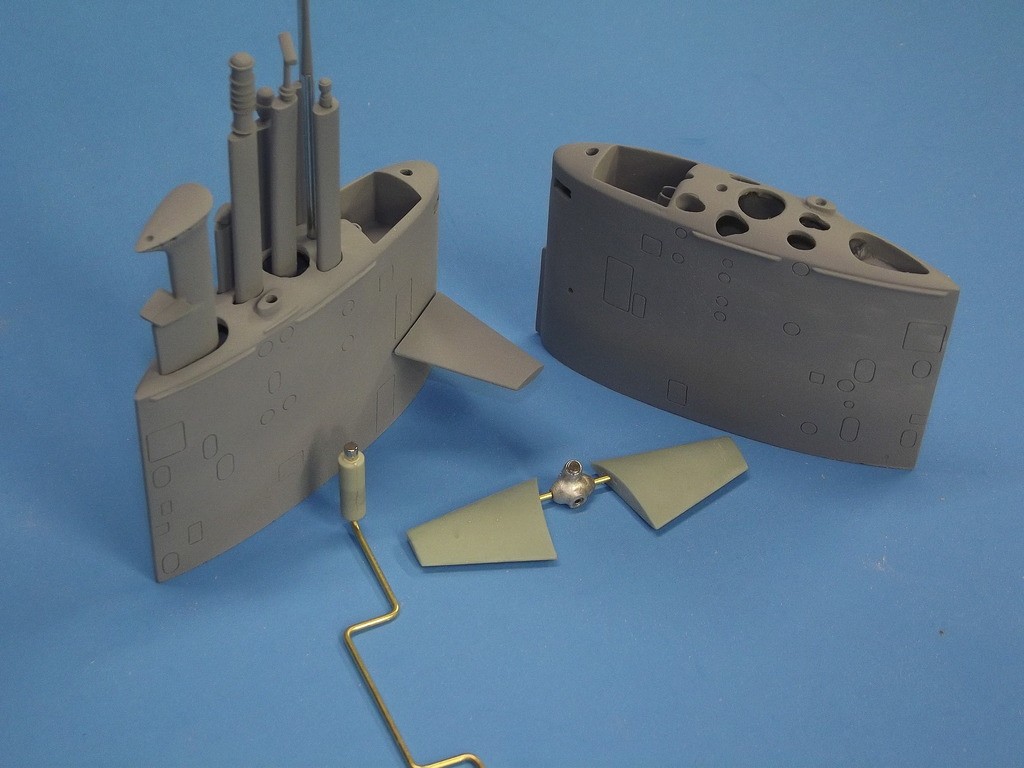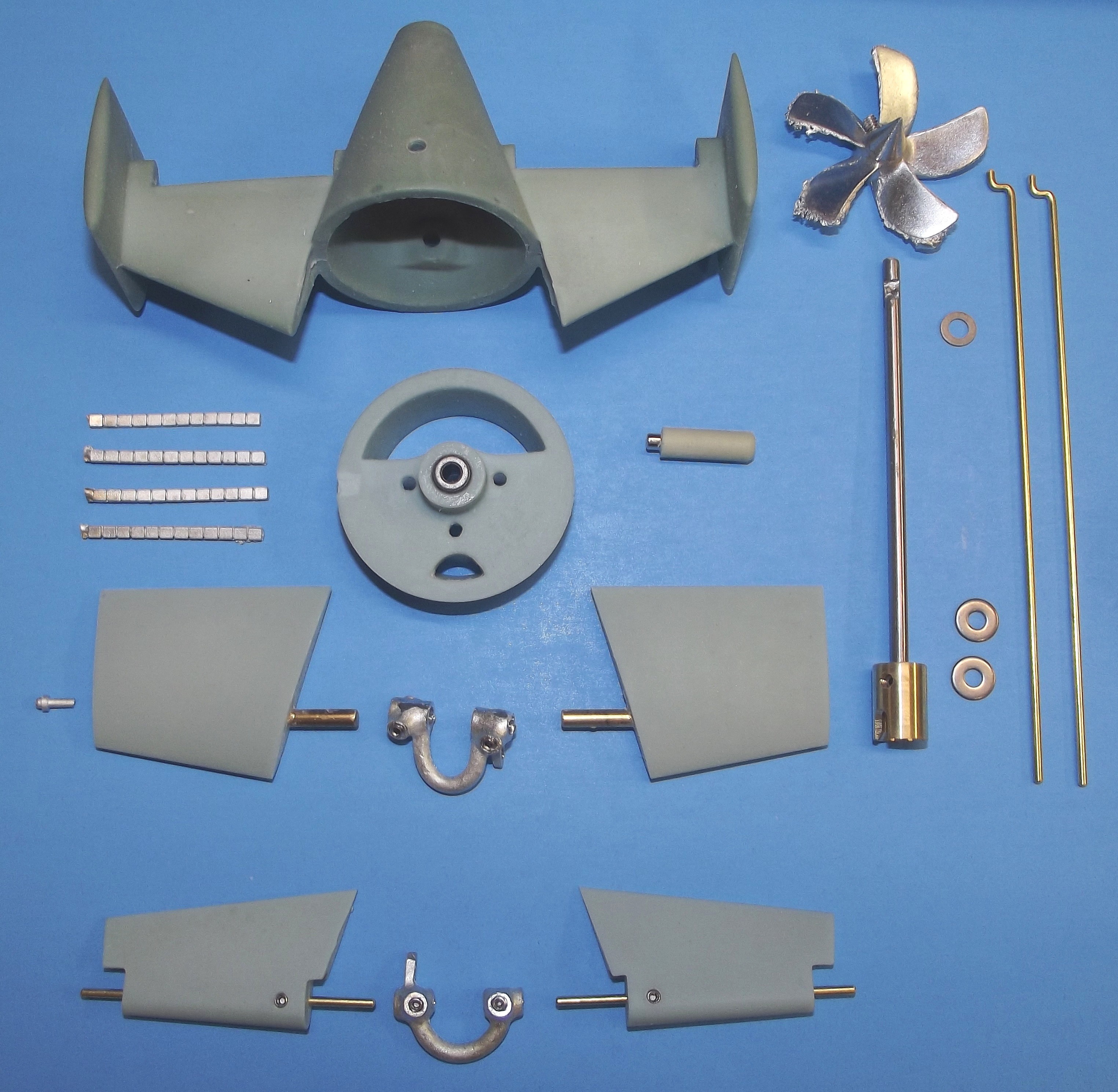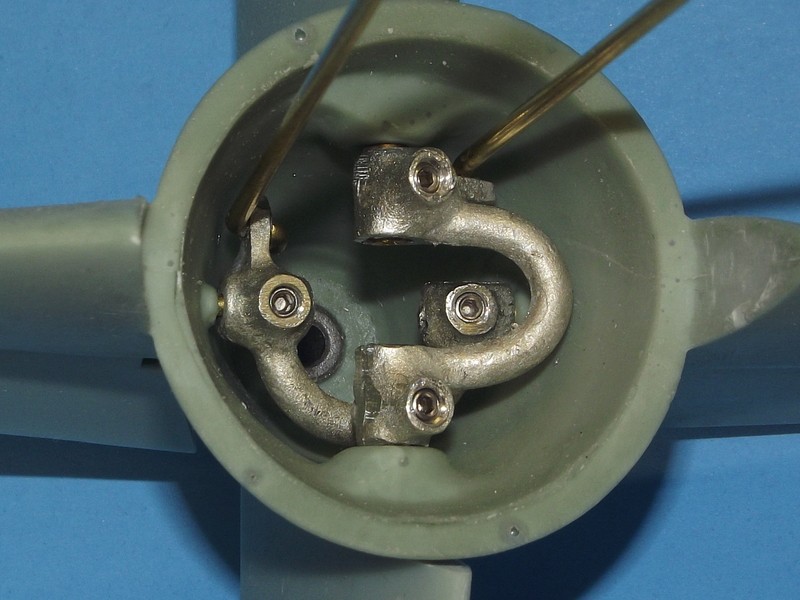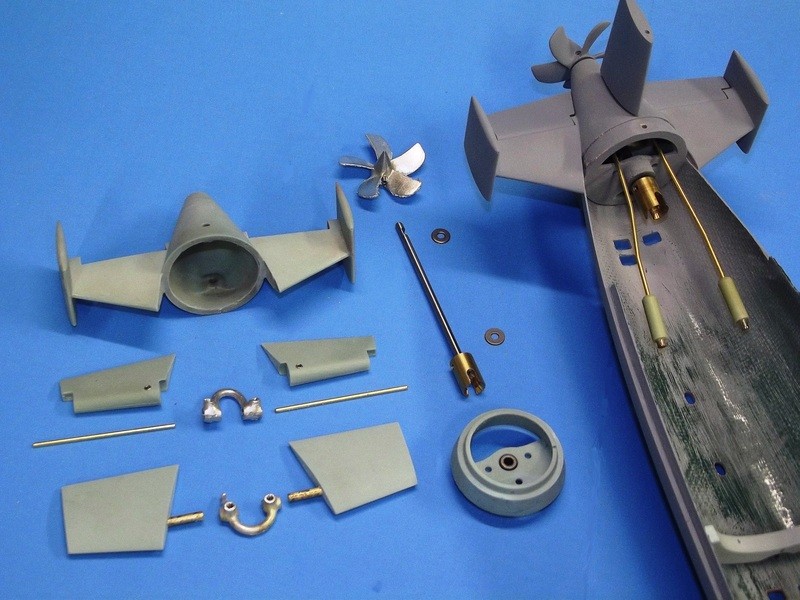New Blueback kit
Collapse
X
-
-
Correct sir. Countering what many so-called r/c submarine 'experts' say, the smaller r/c submarines (and by that I include most of the 1/96 scale subjects) are well served to have practical, separately operated bow/sail planes. Those surfaces have little to no pitching moment and are used to drive the submarine up and down through their own force alone (OK, some arrangements do have some moment about the pitch axis, never mind that ... work with me here!) while maintaining a near zero-bubble
The job of the stern planes is to effect pitch, not depth control. However, in a gross sense, those stern planes can and do work (as Mr. Holland would have it) to maintain or adjust depth by altering the hulls angle of attack about the pitch axis. Depth control by stern planes alone works, but ain't pretty.
I like pretty.
I use active bow/sail planes to maintain or make fine adjustments of depth (as Mr. Lake would have it). Put one of Kevin McLeod's depth-keepers between the receiver and bow/sail plane servo and you sit back and operate your r/c model submarine submerged without working the bow planes from the transmitter all the time.

I've done that for my SWM KILO and with that gadget tending the planes all I have to do is tool around underwater and steer, and issue insults to my target-driving buddies as they operate their simple two-dimensional surface craft.
Here's a typical linkage for sail mounted planes:


Note the use of magnets to make up the pushrod to the sail-plane bell-crank. Zero backlash and this linkage forms an easy make/break connection.
DavidWho is John Galt?Comment
-
I can agree on that.....some would try to talk me out of it (using the bow planes that is)......followed David’s advice.......in addition using them makes the sub dive without the prop braking the surface.
Correct sir. Countering what many so-called r/c submarine 'experts' say, the smaller r/c submarines (and by that I include most of the 1/96 scale subjects) are well served to have practical, separately operated bow/sail planes. Those surfaces have little to no pitching moment and are used to drive the submarine up and down through their own force alone (OK, some arrangements do have some moment about the pitch axis, never mind that ... work with me here!) while maintaining a near zero-bubble
The job of the stern planes is to effect pitch, not depth control. However, in a gross sense, those stern planes can and do work (as Mr. Holland would have it) to maintain or adjust depth by altering the hulls angle of attack about the pitch axis. Depth control by stern planes alone works, but ain't pretty.
I like pretty.
Much prettier it is.
A perfect visualization about the subject can be found Norbert Brüggen’s booklet “Technik Der U-boot Modelle / ISBN 3-88180-036-0, page 25.
grtz,
Bart
Last edited by bwi 971; 12-20-2017, 04:45 PM.Practical wisdom is only to be learned in the school of experience.
"Samuel Smiles"Comment
-
Though (in typical German fashion) Norbert substantiates his statements with math and electronic theory, this book stands as the must-read for anyone wishing to better understand the physics involved in this game. We have Skip Asay; the Brit's have Ron Perrott; the Chinese have (gulp!) William Feng; and the EU has Norbert Brugen. Sparkplugs all.
I can agree on that.....some would try to talk me out of it (using the bow planes that is)......followed David’s advice.......in addition using them makes the sub dive without the prop braking the surface.
Much prettier it is.
A perfect visualization about the subject can be found Norbert Brüggen’s booklet “Technik Der U-boot Modelle / ISBN 3-88180-036-0, page 25.
grtz,
Bart
David
Who is John Galt?Comment
-
I cannot speak to a smaller boat like the Blueback is, but my Skipjack the first two runs were without the sail planes working, just a small downward angle. It ran well. Now looking at what David did and connect it to Kevin's depth control is very cool. I did find that having a sail plane working was beneficial in performance, but not necessary.If you can cut, drill, saw, hit things and swear a lot, you're well on the way to building a working model sub.Comment
-
Comment








Comment